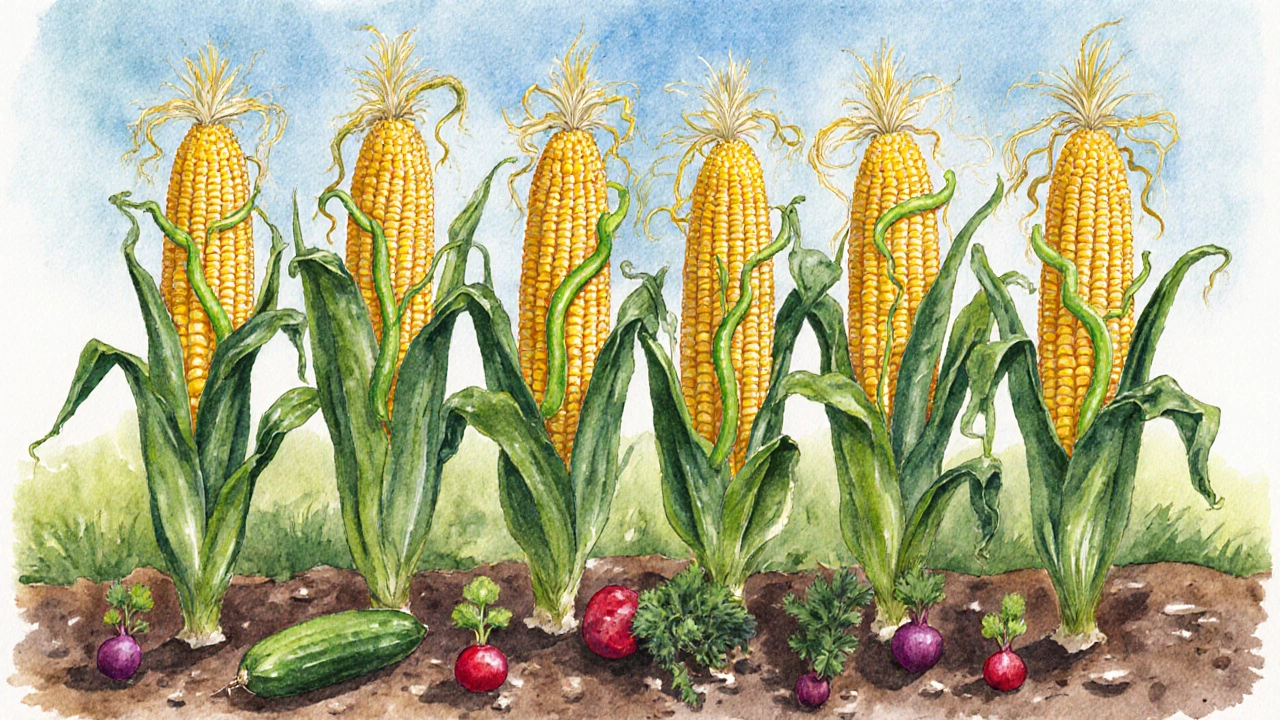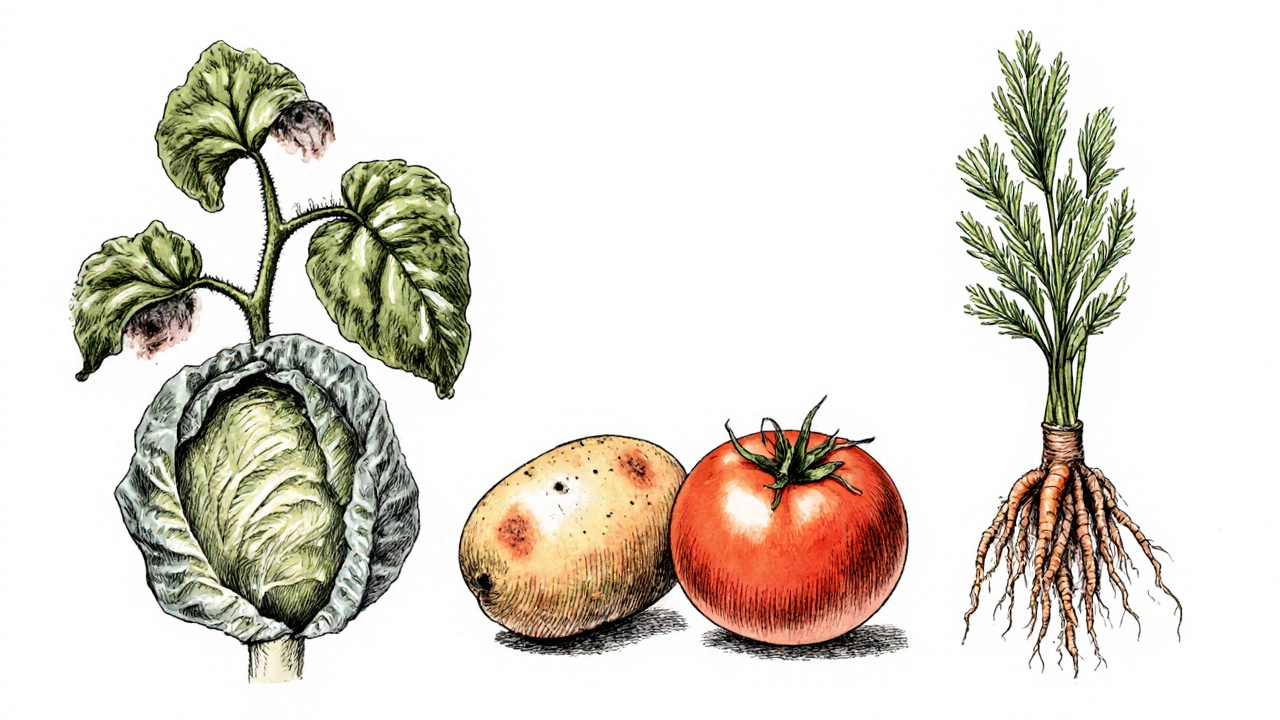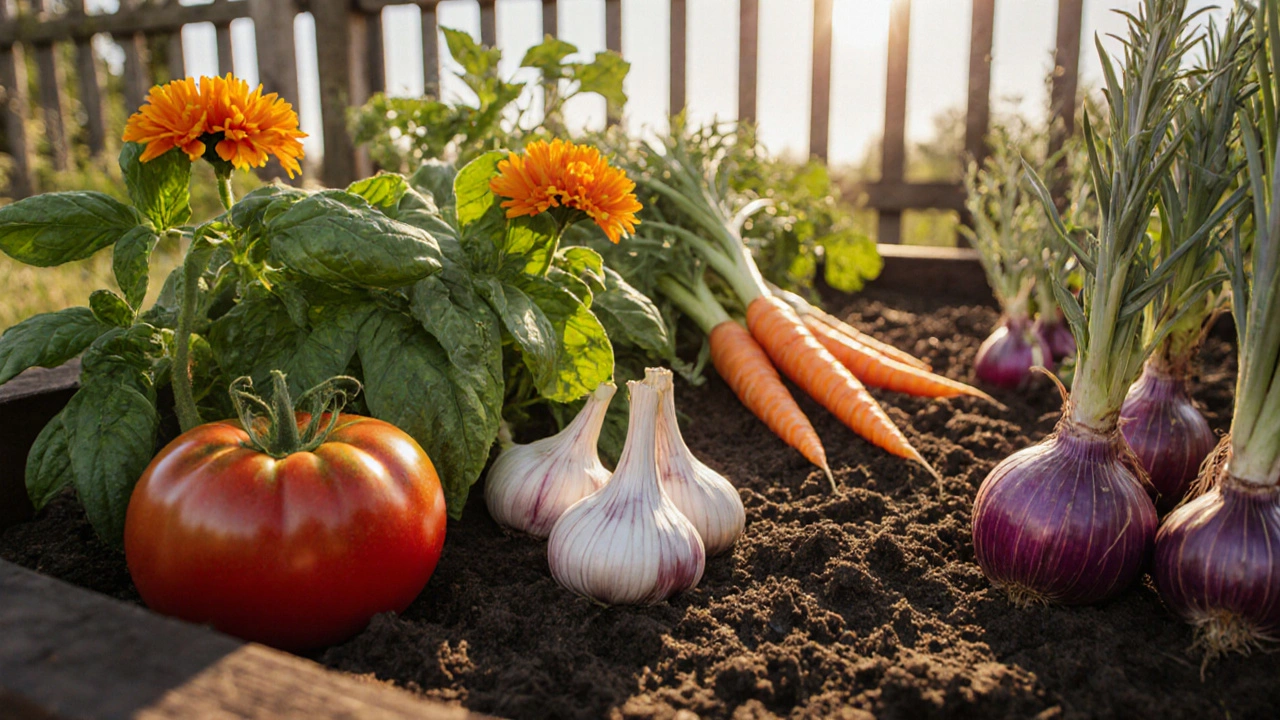Ever wondered why some veggies seem to thrive side‑by‑side while others wilt? The secret lies in vegetable companion planting, a practice that matches crops based on how they interact underground and above ground. By pairing the right plants, you can boost yields, deter pests, and make better use of space.
What is Companion Planting?
Companion planting is the strategic arrangement of crops so they help each other grow, repel pests, or improve soil health. It’s not magic, but a blend of science and tradition that gardeners have used for centuries. The core idea is simple: plants communicate through roots, chemicals, and shade. When you understand those relationships, you can design a garden that works for itself.
Why Some Veggies Get Along
Plants can be friends for three main reasons:
- Nutrient sharing: One crop may pull up nutrients that another needs.
- Pest disruption: Some herbs release scents that confuse or repel insects.
- Physical protection: Tall plants can shade delicate ones, reducing heat stress.
When you pair crops that complement each other in these ways, you’ll notice healthier leaves, fewer bugs, and more tomatoes.
Top Good Companions
Below are some of the most reliable pairings, based on field trials and farmer experience up to 2025.
| Primary Vegetable | Good Companions | Why It Works |
|---|---|---|
| Tomato a warm‑season fruiting vegetable | Basil an aromatic herb that deters whiteflies, Marigold, Garlic | Improves flavor, repels pests, and enhances growth hormones. |
| Carrot a root vegetable rich in beta‑carotene | Onion, Leek, Rosemary | Onion masks carrot scent, deterring carrot fly; rosemary improves soil aeration. |
| Cabbage a cool‑season crucifer | Beans, Dill, Nasturtium | Beans fix nitrogen; dill confuses cabbage moths; nasturtium attracts beneficial insects. |
| Potato a tuber that stores starch in underground stems | Beans, Marigold, Corn | Beans climb around potatoes, reducing shade; marigold suppresses nematodes; corn offers structural support. |
| Bean legume that climbs and fixes nitrogen | Corn, Cucumber, Radish | Corn provides a trellis; cucumber’s vines shade soil, retaining moisture; radish loosens soil for bean roots. |

Pairs to Avoid
Not all combos are friendly. Some actually hinder each other’s growth or invite pests.
- Tomato & Cabbage: Both attract similar fungal diseases, increasing infection risk.
- Potato & Tomato: Share susceptibility to blight; planting together can amplify outbreaks.
- Carrot & Dill: Dill can stunt carrot development and produce twisted roots.
- Bean & Onion: Onion releases compounds that suppress bean nodulation.
- Cucumber & Melon: Compete for vine space and can spread diseases across both.
When you spot a ‘no‑go’ pairing, give those crops at least 2-3 feet of separation or plant them in different beds.
How to Plan Your Companion Garden
Follow these steps to translate the list above into a real garden layout.
- Map your space: Sketch beds, noting sun exposure, soil type, and water access.
- Group by season: Keep cool‑season crops (cabbage, carrot) separate from warm‑season ones (tomato, bean).
- Apply the pairing table: Place each primary vegetable next to at least two good companions.
- Mind the spacing: Use the recommended distances-usually 12‑18 inches for herbs, 24‑36 inches for larger veggies.
- Rotate yearly: Even with perfect companions, rotate families (solanaceae, brassicas, legumes) to prevent soil‑borne diseases.
In Melbourne’s temperate climate, you can start cool‑season crops in March, then transition to warm‑season veggies in September. Adjust timings if you’re in a different zone.

Common Pitfalls & How to Fix Them
- Overcrowding: Too many plants compete for nutrients, leading to weak growth. Thin seedlings to the recommended spacing.
- Ignoring soil pH: Some companions (like beans) prefer slightly alkaline soil, while others (like blueberries-though not a vegetable) need acidic. Test your soil and amend with lime or sulfur as needed.
- One‑size‑fits‑all watering: Herbs like rosemary need drier conditions than tender greens. Water in zones, not across the whole bed.
- Skipping mulch: Mulch conserves moisture, suppresses weeds, and gives beneficial microbes a home-essential for healthy companion interactions.
Quick Reference Cheat Sheet
- Tomato: Best with basil, marigold, garlic; avoid cabbage and potato.
- Carrot: Pair with onion, leek, rosemary; avoid dill.
- Cabbage: Companion with beans, dill, nasturtium; keep away from tomato and strawberries.
- Potato: Works with beans, marigold, corn; steer clear of tomato and cabbage.
- Bean: Good with corn, cucumber, radish; avoid onion and garlic.
Frequently Asked Questions
Can I plant tomatoes and basil in the same pot?
Yes. A 12‑inch pot works if you prune both plants regularly. Basil’s scent keeps whiteflies away, and the tomato benefits from the extra flavor.
Why do beans and corn make a good duo?
Corn provides a natural trellis for climbing beans, while beans fix nitrogen, enriching the soil for the corn’s heavy nutrient demand.
Should I rotate my garden every year?
Rotating families (e.g., move solanaceae to a new bed) reduces disease buildup and balances soil nutrients.
Is mulch necessary for companion planting?
Mulch helps retain moisture, suppress weeds, and creates a habitat for beneficial microbes-all of which support healthy plant relationships.
Can I plant carrots and onions together in a raised bed?
Absolutely. Onions mask carrot scent, confusing carrot flies, while carrots loosen soil for onion roots.





